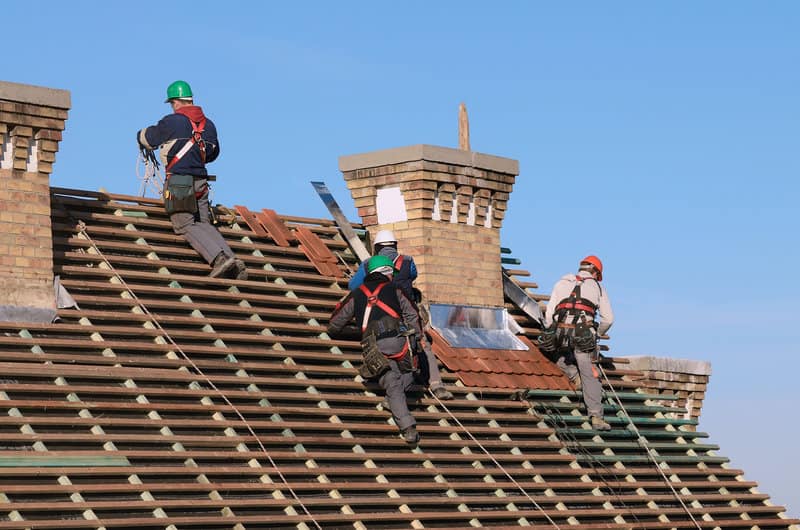How to Review Different Roof Covering Options for Your Structure Requirements
Examining roofing options for your structure calls for an extensive strategy that takes into consideration numerous aspects such as the meant use the framework, regional climate conditions, and product attributes. It is important to weigh the benefits and drawbacks of different roof covering kinds, from asphalt tiles to steel and clay ceramic tiles, while likewise factoring in preliminary costs and long-term upkeep. Additionally, understanding power performance and aesthetic charm can influence your choice. As you consider these considerations, one inquiry continues to be: which variables will inevitably lead your option for a lasting and aesthetically pleasing roofing remedy?
Examining Your Structure's Demands
To efficiently assess roof covering options, start by completely assessing your building's needs. Begin by thinking about the structure's planned use, as different frameworks might necessitate varying roof requirements. Domestic roofings usually prioritize looks and insulation, while business buildings might focus on durability and load-bearing capability.
Following, assess the local environment conditions that will influence roofing performance. Elements such as temperature variations, precipitation levels, and wind patterns can affect product selection and design. A roofing system that succeeds in a temperate environment might not execute also in locations susceptible to hefty snowfall or extreme warm.
Furthermore, evaluate the architectural stability of your structure. Ensure that the existing structure can sustain the picked roofing materials, particularly if taking into consideration larger choices. It is also crucial to examine any kind of local building regulations or laws that might determine specific needs for roof.

Comparing Roofing Products
When a detailed evaluation of your structure's needs has actually been finished, the next step involves comparing numerous roofing products. Each product supplies distinctive benefits and drawbacks, making it important to straighten your option with your details demands and conditions.
Asphalt tiles are extensively acknowledged for their price and ease of setup, making them a preferred alternative for property structures. On the other hand, metal roofing, understood for its durability and longevity, can endure extreme climate condition yet might feature a higher preliminary financial investment.
Clay and concrete floor tiles offer exceptional thermal insulation and visual charm, especially for Mediterranean-style design, yet they need an even more robust architectural assistance because of their weight. Timber shakes deal a natural look and excellent insulation homes however might require much more maintenance and are vulnerable to fire threats.
Reviewing Cost and Spending Plan
Analyzing your roof options requires a mindful analysis of price and budget plan considerations. The general budget plan for a roof project consists of several factors, consisting of product prices, labor expenditures, maintenance, and possible long-term savings. It is necessary to establish a clear budget plan prior to discovering details roofing materials, as this will certainly lead the decision-making procedure and help you stay clear of overspending.
Begin by acquiring quotes from several specialists to recognize labor prices in your area. Make certain that these quotes include all necessary services, such as elimination of the old roofing system, installment, and any type of extra features, like insulation or air flow improvements - Roofer. Next off, evaluate the price of different roof covering products, considering both initial installation costs and anticipated lifespan

Understanding Power Performance
Power performance plays a crucial function in the choice of roof covering products and systems, dramatically affecting both energy usage and general comfort within a building. A well-chosen roof covering can improve thermal efficiency, reducing the need for heating and cooling systems, which in turn decreases power costs and minimizes environmental effect.
When reviewing roof covering alternatives, think about products that show as opposed to absorb warm. Light-colored or reflective roofing products can substantially reduce roofing surface temperatures, causing reduced energy use during warm months. Additionally, proper insulation and ventilation are vital to optimize the energy effectiveness of the entire roof. Insulation protects against warmth transfer, while ventilation minimizes warm accumulation in the attic room area.
An additional crucial aspect is the roof system's longevity and upkeep demands. Resilient materials that require much less regular replacement add to long-term power cost savings. The energy performance of a roof system can also be evaluated original site through its conformity with well established sustainability ratings such as Power STAR or LEED.
Thinking About Visual Allure
A roofing system's aesthetic charm dramatically affects the total appearance of a building, matching its building design and boosting curb charm. Toledo Roofer. When evaluating roofing options, it is necessary to consider how the selected material, shade, and style will certainly integrate with the existing structure and neighborhood. A well-designed roofing can boost also the easiest of structures, changing them right into visual focal points
Various roof covering products offer numerous visual qualities. Typical roof shingles may evoke a classic beauty, while metal roof covering can pass on a modern, smooth appearance. In addition, the shade of the roof product plays a vital duty; lighter tones can make a building appear more roomy, while darker tones may develop a cozier atmosphere.
Furthermore, architectural components, such as dormers and eaves, can boost the roofing's aesthetic influence. It is advisable to consult with professional designers or engineers to make sure the selected roofing option straightens with the overall style intent. Eventually, a roofing must not just offer functional benefits however also add positively to the structure's aesthetic, mirroring the owner's preference and the character of the surrounding atmosphere.
Conclusion
